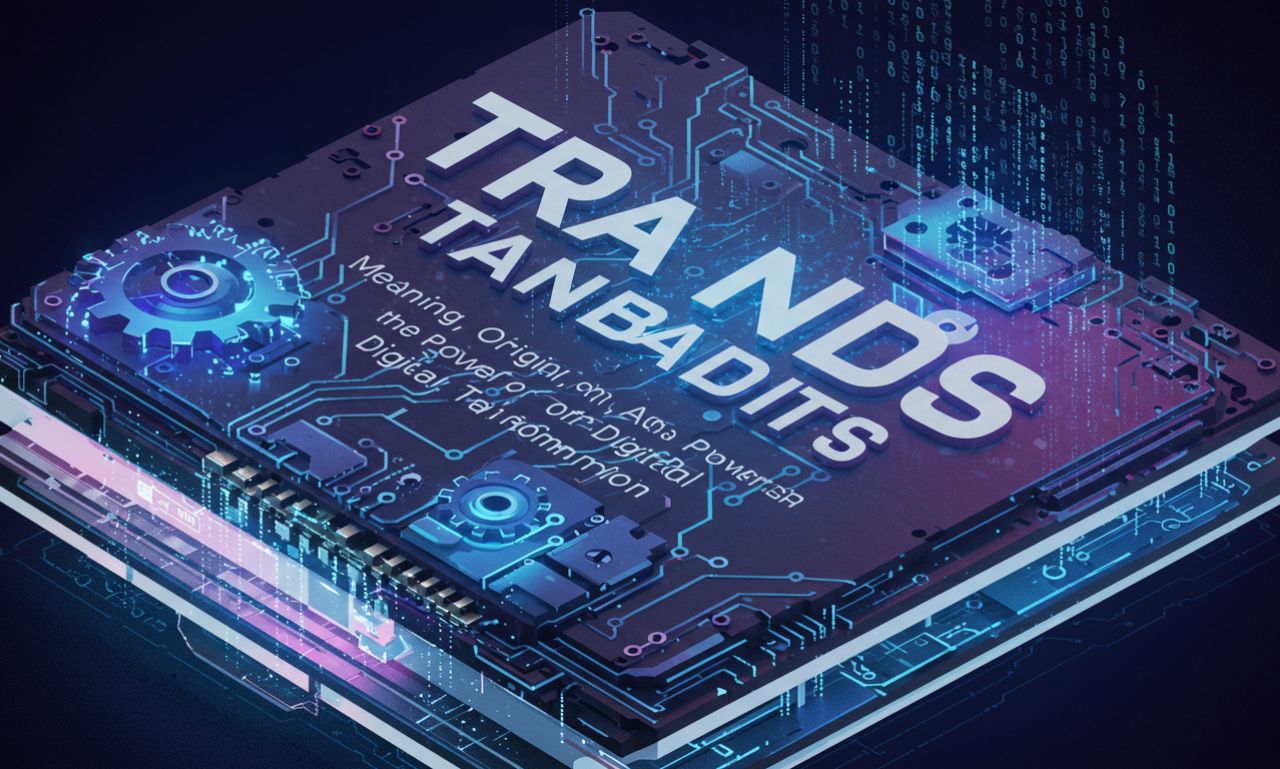In an era dominated by technological innovation, sustainability, and digital interconnectivity, the word Transds has emerged as a term symbolizing transformation and forward-thinking systems. Although relatively new, Transds is increasingly used to describe digital evolution, systemic adaptability, and transformative processes in industries ranging from technology to business.
This article dives into the origin, meaning, and applications of Transds while exploring how it defines the next wave of digital progress, sustainability, and human-centered design.
Understanding the Meaning
What Does Transds Mean?
The term Tran-sds can be broken down conceptually into two parts:
-
“Trans” — meaning across, beyond, or transformation.
-
“DS” — often interpreted as digital systems, data science, or dynamic structures.
When combined, Tran-sds conveys the idea of transforming through digital systems or transcending through data science. It represents the fusion of technology, intelligence, and evolution, emphasizing growth and innovation beyond traditional boundaries.
The Essence of Transds
At its core, Tran-sds represents a philosophy of transformation—the idea that change, when guided by technology and purpose, leads to progress. It encourages individuals, organizations, and societies to evolve intelligently, using data, creativity, and collaboration as catalysts for advancement.
The Origin and Development
Early Conceptualization of Transds
The concept of Tran-sds began emerging in discussions surrounding digital transformation and intelligent systems. Initially used in technology forums and research groups, it described the shift from static operations to adaptive, data-driven structures.
Over time, Tran-sds became a symbol of digital evolution, representing systems capable of learning, evolving, and optimizing themselves—similar to how living organisms adapt to their environment.
Evolution in Modern Context
Today, Tran-sds has expanded beyond technology. It now represents a mindset of transformation—applied not only to software or machines but also to human creativity, social systems, and ecological sustainability. It is a concept that celebrates progress through adaptation.
Applications Across Industries
1. Transds in Technology
Technology is the natural home of Tran-sds. The concept aligns closely with the principles of artificial intelligence, automation, and machine learning.
In the tech landscape, Tran-sds refers to:
-
Adaptive systems that evolve based on data feedback.
-
Smart networks that self-correct and optimize.
-
AI-driven platforms that learn and improve over time.
For example, Tran-sds algorithms can enhance user experiences by adapting interfaces or predicting needs dynamically—making technology more intuitive and personalized.
2. Transds in Business and Management
In business strategy, Tran-sds represents a company’s ability to transform digitally and operationally. Organizations using Tran-sds principles focus on agility, automation, and innovation-driven growth.
A Tran-sds business model typically includes:
-
Cloud-based systems for flexible scalability.
-
Data-driven decision-making.
-
Continuous innovation through feedback and analytics.
Companies embracing Transds are not just digitizing—they are redefining their DNA to thrive in the era of constant disruption.
3. Transds in Science and Research
In scientific fields, Tran-sds is associated with cross-disciplinary collaboration—merging data science, biology, physics, and computing to accelerate discovery.
Through Tran-sds-driven approaches, researchers use:
-
Predictive modeling to simulate outcomes.
-
AI-assisted analysis for rapid insights.
-
Integrated data ecosystems for collaborative studies.
Tran-sds embodies the future of smart science, where technology and human curiosity converge to solve complex global problems.
4. Transds in Education and Learning
Education has entered a transformative phase driven by Transds innovation. Learning systems now adapt to students’ needs, creating personalized pathways through AI and analytics.
Key elements of Tran-sds education include:
-
Adaptive learning platforms.
-
Virtual classrooms with real-time feedback.
-
Lifelong digital skill development.
By applying the Tran-sds philosophy, educators aim to make learning more accessible, engaging, and future-oriented.
The Core Principles
The Transds model operates on several foundational principles that guide transformation in every domain:
-
Adaptability: The ability to evolve with new data, trends, and insights.
-
Integration: Connecting systems, tools, and people seamlessly.
-
Sustainability: Ensuring transformation benefits both people and the planet.
-
Innovation: Embracing new ideas without fear of disruption.
-
Resilience: Building systems capable of withstanding rapid change.
These principles together define how Tran-sds thinking enables intelligent evolution across industries.
The Cultural Significance of Transds
Transds as a Mindset
Beyond technology and systems, Tran-sds represents a human mindset. It reflects the willingness to change, adapt, and innovate continuously. People who adopt a Tran-sds mindset are proactive learners, creative thinkers, and forward planners.
This attitude is essential in a world where digital transformation affects every aspect of life—from communication to career growth.
Transds and Global Society
Culturally, Tran-sds promotes unity through digital interconnection. It advocates for collaboration beyond borders, encouraging nations, organizations, and individuals to share data, knowledge, and innovation responsibly.
This makes Tran-sds a framework for global progress—driving collective intelligence in solving climate issues, health crises, and social inequalities.
Transds and Sustainability
A major dimension of Tran-sds is sustainability. As industries grow increasingly digital, the need for eco-conscious innovation has never been greater.
Tran-sds sustainability emphasizes:
-
Green computing and energy efficiency.
-
Smart cities that balance growth and environment.
-
Circular economy models powered by data analytics.
By aligning technology with environmental goals, Transds ensures that innovation does not compromise the planet’s health.
Challenges
While Tran-sds offers immense potential, it also brings several challenges:
-
Data Security: Increased connectivity raises privacy concerns.
-
Ethical Dilemmas: AI-driven automation can lead to ethical conflicts.
-
Digital Divide: Unequal access to technology may widen socioeconomic gaps.
-
Complex Integration: Implementing Tran-sds systems requires significant technical coordination.
Overcoming these challenges demands a balanced approach—one that combines innovation with ethics and inclusivity.
The Future of Transds
1. Transds and AI Integration
Artificial intelligence will play a central role in the next phase of Tran-sds evolution. From predictive healthcare to autonomous vehicles, AI will continue to shape industries through smart automation and cognitive computing.
2. Transds and the Metaverse
The Metaverse offers new ground for the Tran-sds concept. By merging digital and physical realities, the Transds framework can guide ethical, immersive, and creative development within virtual spaces.
3. Transds and Human Evolution
Ultimately, Tran-sds envisions a future where humans and machines evolve together. This synergy will redefine learning, communication, and productivity—ushering in a world where intelligence is collective, adaptive, and ever-evolving.
Why Transds Matters
Driving Change in the Digital Era
In today’s hyperconnected world, Tran-sds is not just a trend—it’s a necessity. It offers a structured approach to transformation, empowering individuals and organizations to innovate while staying ethically and environmentally aware.
Empowering Future Generations
The Transds philosophy equips future generations with the mindset and tools needed to lead in a digital-first world. By embracing adaptability and creativity, they can shape a sustainable and intelligent global society.
Conclusion
Tran-sds encapsulates the spirit of transformation that defines our time. It stands for progress, adaptability, and unity through digital intelligence. From technology and business to education and sustainability, Tran-sds is reshaping how we think, work, and live.
As humanity steps into the next digital era, adopting a Tran-sds approach means embracing continuous evolution—where innovation meets purpose, and technology empowers progress.

